The agile dilemma: Kanban vs. Scrum
June 13 | 08 mins read
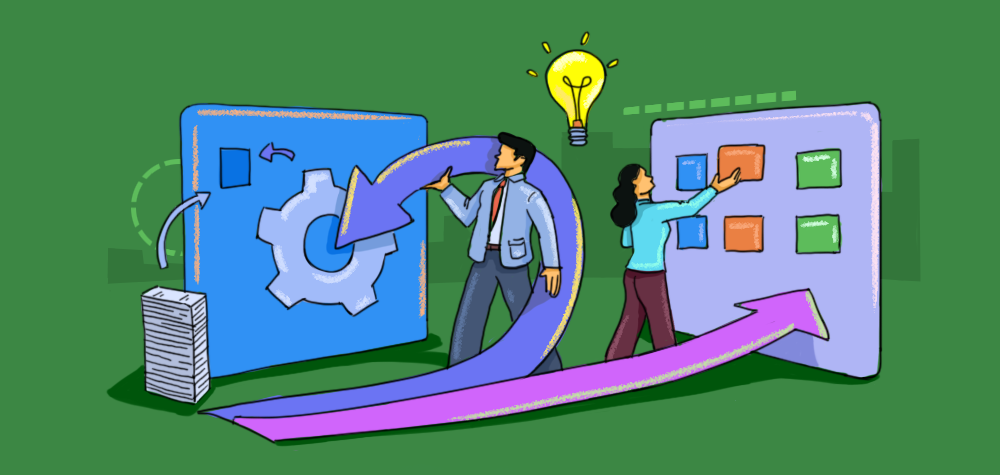
The two faces of agile: Kanban and Scrum
The agile methodology has transformed software development by providing flexible and iterative approaches to managing projects. Among the most prominent frameworks within the agile landscape are Kanban and Scrum. While both aim to enhance productivity and efficiency, they operate on distinct principles and practices. In this article, we delve into the origin, key features, principles, differences, and similarities between Kanban and Scrum.
What is Kanban?
Kanban is a workflow management method used in project management to visualize work, maximize efficiency, and improve continuously. Kanban emphasizes evolutionary changes to ongoing projects with a focus on improving efficiency and reducing waste.
What is Scrum?
Scrum is a framework utilized by software development and project management teams to autonomously organize and collaborate in order to achieve a common objective. Scrum offers a structured approach for teams to collaborate and deliver high-value products incrementally and iteratively.
Origin of Kanban and Scrum
Kanban originated from Toyota's manufacturing processes in the 1940s and gained popularity through Lean manufacturing principles. It emphasizes continuous delivery, visualizing workflows, limiting works in progress (WIPs), and optimizing flow efficiency.
Scrum emerged in the 1980s as a software development framework, focusing on iterative development, self-organizing teams, and time-boxed iterations known as sprints.
Similarities between Kanban and Scrum
- Kanban and Scrum are both based on the principles of lean and agile methodologies.
- They both break down tasks into smaller, simpler units and strive to minimize the volume of works in progress.
- Additionally, both methodologies employ pull scheduling, wherein products are developed in response to demand rather than anticipated forecasts.
Differences between Kanban and Scrum
While both Kanban and Scrum adhere to the principles of agile methodologies, there are a few important distinctions.
Framework structure of Kanban and Scrum
Kanban uses a visual board (Figure 1) divided into columns representing different stages of a workflow that includes work items in To Do, In Progress, and Done columns. This is a simple visual board, and you can incorporate more columns as needed. Work items, in the form of cards, move across columns as they are worked on. This visual representation provides transparency into the status of work and helps teams identify bottlenecks, manage workflows, and prioritize tasks effectively.
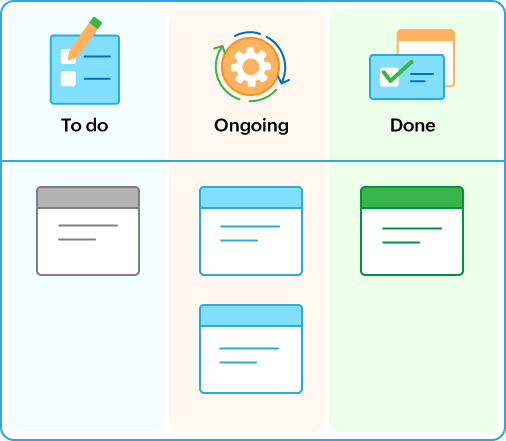
Scrum, in contrast, operates on a sprint-based model (Figure 2), with fixed-length iterations typically lasting two to four weeks. Scrum promotes collaboration, adaptability, and continuous improvement, enabling teams to deliver value incrementally and respond effectively to changing requirements and customer feedback. It provides a framework for managing complex projects while fostering transparency, self-organization, speed, and accountability within the team.
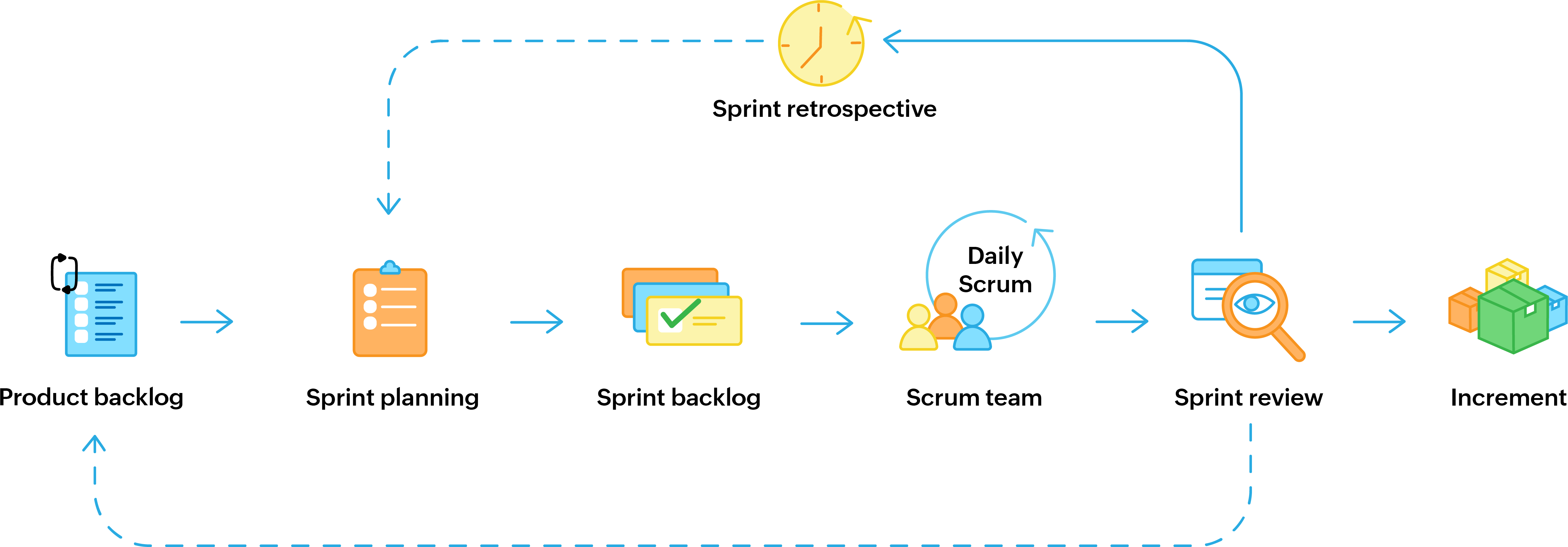
2.Principles of Kanban and Scrum
Kanban: Visualize, limit WIPs, and stay adaptable.
The core principle of Kanban is visualizing work items, accompanied by limiting WIPs to prevent overloading and to maintain a steady flow of work. Furthermore, it involves dynamically managing workflows based on demand and capacity, and continuously improving processes through feedback and adaptation. Kanban promotes flexibility, adaptability, and continuous delivery, making it particularly suitable for teams working on projects with shorter duration and seeking a lightweight agile approach to project management. It is often used alongside other agile methodologies and can be customized to suit the specific needs of different teams and projects.
Scrum: Move fast, iterate, work on feedback.
At its core, Scrum operates on the principles of transparency, inspection, and adaptation. The work is divided into timeboxed iterations called sprints, which usually span two to four weeks. Within each sprint, cross-functional teams collaborate to produce a product increment that is ready for shipping. It comprises predefined roles, artifacts, and events.
Scrum roles include:
- Scrum master: In charge of overseeing the Scrum process, resolving obstacles, and ensuring the team follows Scrum principles and practices.
- Product owner: Represents the interests of stakeholders, prioritizes the product backlog, and ensures the team delivers value with each sprint.
- Development team: A cross-functional team accountable for delivering the product increment in every sprint.
Scrum artifacts include:
- Product backlog: List of features, enhancements, and fixes that the product owner prioritizes and manages.
- Sprint backlog: Items chosen from the product backlog for implementation during the sprint.
- Increment: The total of all finished items in the product backlog by the end of a sprint.
Scrum events include:
- Sprint planning: A meeting in which the team discusses and organizes the tasks to be accomplished within the sprint.
- Daily stand-up: A brief daily meeting where team members align their activities and review their progress.
- Sprint review: A meeting conducted at the conclusion of a sprint to showcase and present the finished tasks to stakeholders.
- Sprint retrospective: A meeting at the end of the sprint to review their progress and pinpoint areas that need improvement.
3. Implementation and flexibility
Kanban emphasizes continuous delivery and flexibility by allowing tasks to be pulled as capacity permits, promoting adaptability to changing priorities. Its implementation involves visualizing workflows, limiting work in progress, and continuous improvement.
In contrast, Scrum provides a structured framework with fixed-length iterations (sprints) to deliver incremental value. Its implementation includes defined roles, events, and artifacts, offering a clear roadmap for project execution. While Kanban focuses on optimizing flow and minimizing lead time, Scrum prioritizes delivering potentially shippable increments at the end of each sprint.
However, both methodologies prioritize continuous improvement and empower teams to deliver value efficiently in dynamic environments.
4. Measuring efficiencies in Kanban and Scrum
In Kanban, metrics primarily focus on visualizing workflows and optimizing them for efficiency. Key metrics include:
- Lead time: The time taken for a task to move from creation to completion (Figure 3).
- Cycle time: The time taken for a task to move through the workflow once work has begun on it (Figure 3).
- Throughput: The rate at which tasks are completed over a given time period.
- WIP: The number of tasks currently being worked on, which helps in identifying bottlenecks.
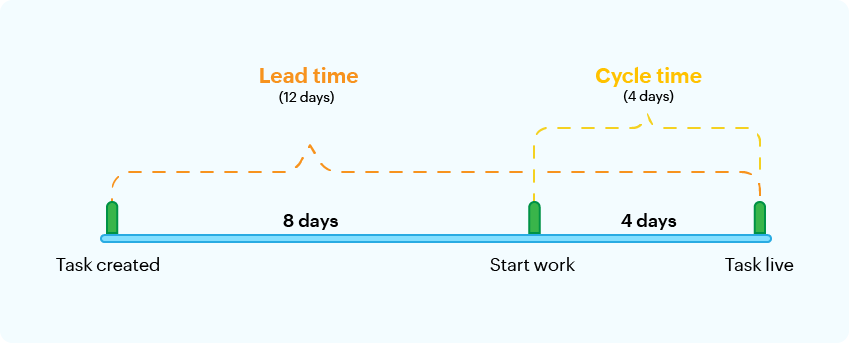
Scrum emphasizes sprints, with metrics aimed at tracking team productivity and progress towards sprint goals. Key metrics in Scrum include:
- Velocity: The amount of work completed by the team in each sprint, measured in story points or tasks (Figure 4).
- Burndown chart: Graphical representation of remaining work versus time within a sprint, helping to track progress towards completing the sprint backlog.
- Sprint burnup chart: Similar to the burndown chart but tracks the total work completed versus time, providing insights into overall project progress.
- Sprint goal success rate: Percentage of sprints in which all sprint goals were achieved.
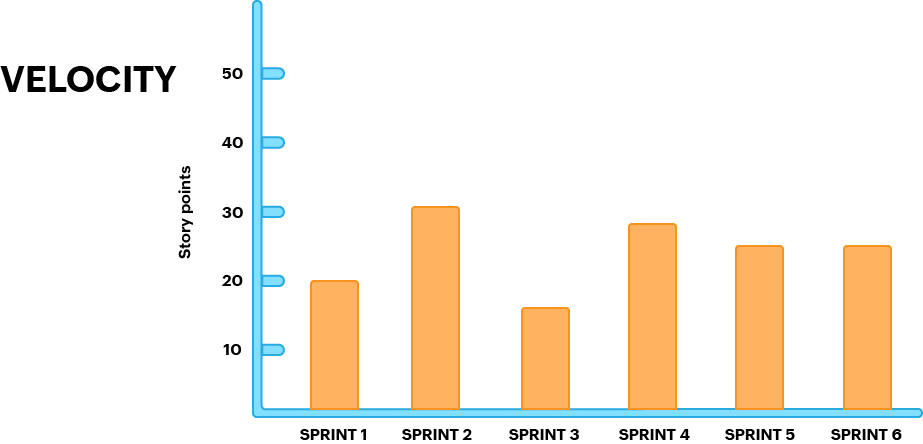
Both methodologies use these metrics to facilitate continuous improvement and enable teams to deliver value more effectively.
| Kanban | Scrum | |
|---|---|---|
| Roles | No roles | Product owner, scrum master, and development team |
| Practices | Visualize the sequence of tasks, restrict the amount of unfinished work, control the movement of work, and include mechanisms for receiving and acting upon feedback | Sprint planning, sprint, daily scrum, sprint review, and sprint retrospective |
| Release cycle | Continuous | Two to four weeks cycle |
| Data representation | The Kanban board stays persistent throughout the project | The Scrum board is cleared at the end of each sprint |
| New additions | New items can be added to the Kanban board anytime | No new items can be added during a sprint |
| Project | Ideal for projects with shorter completion timelines | Suited for longer projects |
| Metrics | Lead time, cycle time, throughput, WIP | Velocity, burndown chart, sprint burnup chart, sprint goal success rate |
Which one is right for you—Kanban or Scrum?
Both Kanban and Scrum are effective agile project management methodologies that have their unique strengths. Kanban is ideal for teams that deal with a continuous inflow of tasks and requests and require work to flow seamlessly. Scrum, on the other hand, can help teams that deal with complex projects with tight deadlines. The specific needs and goals of your team and project will ultimately determine whether Kanban or Scrum is the better choice. It is important to evaluate your project requirements and team dynamics before deciding on a methodology.
Additionally, it is possible to combine elements of both Kanban and Scrum to create a hybrid approach, Scrumban, that works best for your team. Scrumban combines the best elements of Scrum and Kanban, fashioning a hybrid framework that is suitable for teams facing challenges in selecting a methodology. It seamlessly integrates the processes of Scrum with the visualization tools of Kanban. Whichever methodology you choose, the key is to adapt continuously and improve your processes to achieve maximum efficiency and success.
About the author

